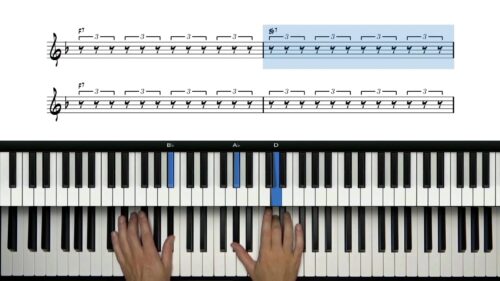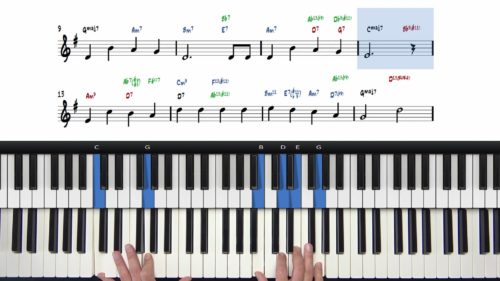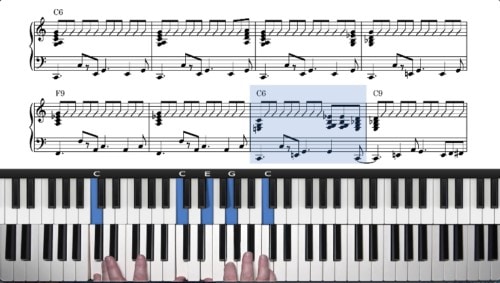Slow Blues Bass Line Patterns
In this module we focus on the 12/8 pulse and common space fillers to create an interesting and full-sounding slow blues piano performance.
We have already covered this theory in the slow blues in F course and so we will move at a slightly faster pace in this course, whilst still covering the essential theory and the most important drills and exercises.
Understanding the 12/8 Pulse
The 12/8 pulse involves subdividing each of the 4 beats in a bar into 3 quarter note triplets. This creates a 12/8 feel that ‘stretches out’ the time and provides space for melodic and harmonic embellishment. This is an important element for slow blues piano as it creates a more relaxed and spacious groove.
Instead of counting the 4 beats of the 4/4 time signature, we count each of the 12 subdivisions which can be done by vocalising the word “tri-p-let” or counting from 1 to 12.
The 12/8 Groove – Left Hand Patterns
To become accustomed and comfortable with the 12/8 groove, practice the isolated left-hand pattern which starts with an octave in the lower registers, then moves to a shell voicing 1 octave higher, and finally we play 5th, 6th, and 7th notes of scale to outline the 12/8 pulse.
This pattern is a great practice drill to help us to internalise the 12/8 feel when playing slow blues piano. We learn this pattern with the primary chords of the blues progression, alternating between octaves, shells, and 10ths to create variety in our left hand accompaniment.
Creating Strong Foundations
Mastering the 12/8 pulse is an essential component of the slow blues piano style. The left-hand patterns outlined in this lesson will help you to feel the underlying pulse and provide a strong rhythmic foundation for the right hand.
By practicing the different left hand voicing configurations we can create different textural effects in our left hand. Repetition is crucial; cycling around the blues form with the left hand pattern will build comfort and fluidity, helping to internalise the 12/8 feel and making these bass lines second nature over time.
Practice Tips
-
Count Out Loud: Start by counting the 12/8 pulse out loud to internalise the rhythm. Use the word "tri-p-let" or count from 1 to 12.
-
Left-Hand Drills: Practice the left-hand pattern in isolation, focusing on octaves, shells, and 10ths. Alternate between them to build muscle memory and fluidity.
-
Feel the Groove: Play through the blues progression with just the left hand, mixing different left hand configurations and playing in different registers of the piano.
-
Slow Practice: Take it slow at first to ensure accuracy and to develop muscle memory. Gradually increase the tempo as you become more comfortable.
-
Daily Repetition: Revisit these exercises daily. Consistent practice helps to reinforce the 12/8 groove until it becomes an internal rhythmic compass.






